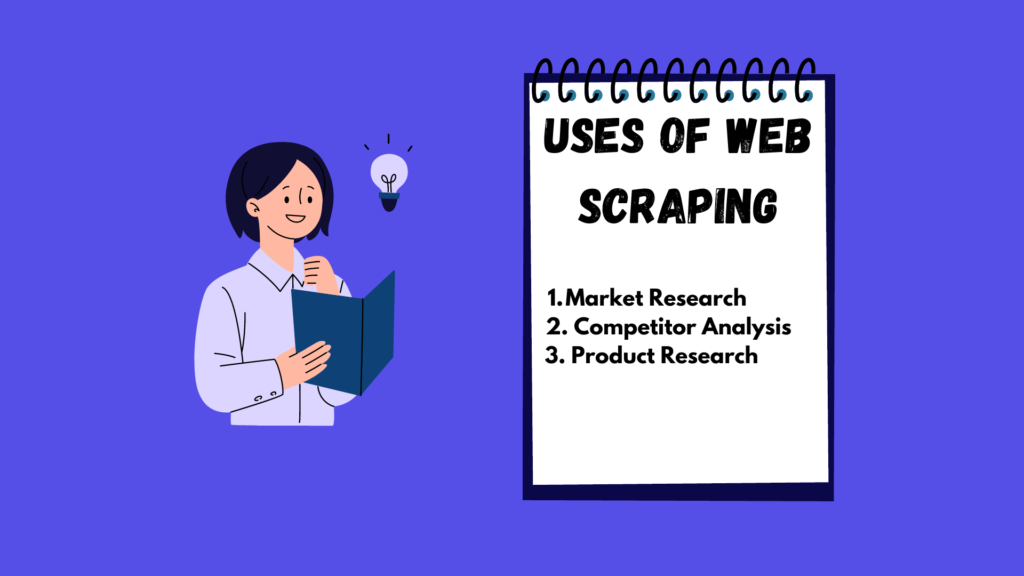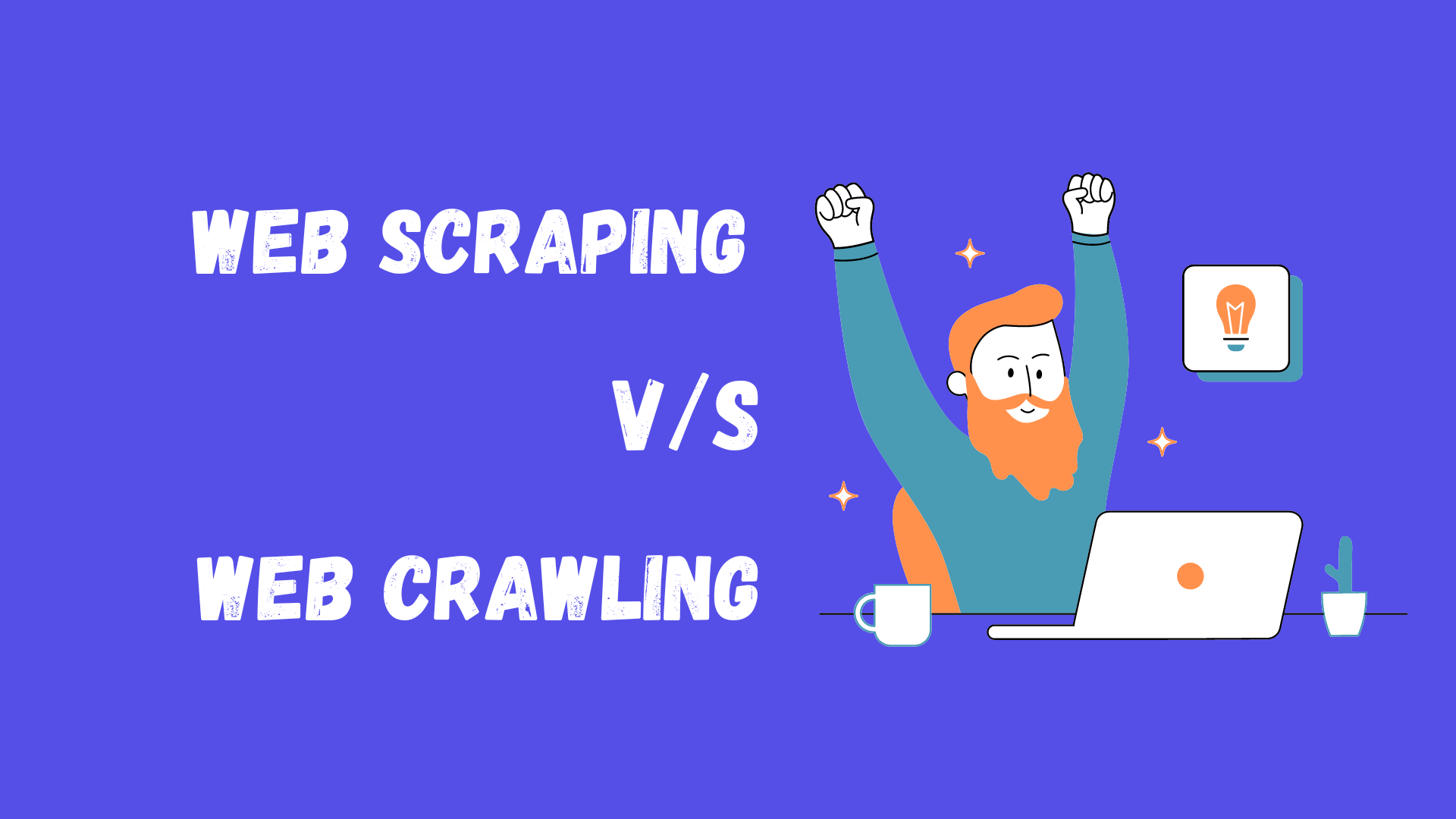You might have heard of the term web scraping and web crawling. At some point, you also used these words interchangeably. But, despite a couple of similarities, they hold huge differences between each other.
This tutorial will teach the differences between web crawling and web scraping. We will also explore web scraping and web crawling in detail so that you can understand the distinctions between them.
What is Web Scraping?
Web Scraping is the process of extraction of data in an automated manner from publicly available data sources. It can also be done manually, however, it will consume an ample amount of time and resources making the process of data extraction unfeasible. It is generally helpful when a desired website does not offer any official API or is expensive to be used by developers.
Read More: Web Scraping — A Complete Guide
The gathered data can be used for various purposes such as price monitoring, market research, and data analysis according to the specific demands of the businesses. Additionally, companies can enrich their datasets through web scraping to obtain more comprehensive insights into their respective industry.
Uses of web scraping
Web Scraping helps developers and businesses in a variety of ways:

Market Research: Web Scraping allows businesses to identify future trends and patterns, understand customer sentiments, and gain a more profound knowledge of market demand, enabling them to align their products or services according to consumer interest.
Competitor Analysis: In a world of fierce competition, web scraping allows businesses to gather important insights into the strategies followed by their competitors, allowing them to identify the strengths and weaknesses of their competitors and gain a competitive edge in the market.
Product Research: Product Research is essential when launching a new product. Web Scraping enables businesses to get a sneak peek into the products offered by their competitors. By analyzing the pricing model, ratings, and customer reviews they can gather insights into customer preferences and identify gaps in the market to develop competitive product strategies.
What is Web Crawling
Web Crawling can be defined as the process of systematically analyzing the gathered URLs and inspecting their content, commonly used in applications such as search engines, price comparison, business intelligence, and more.
This technique is widely used on a large scale by search engines like Google, Bing, Yandex, etc. Additionally, it is instrumental for SEO analysis as it enables businesses to collect data about their backlinks, website rankings, and much more.
Uses of Web Crawling
Web Crawling helps developers and businesses in a variety of ways:
Enormous Data Collection — Web Crawlers enable you to collect vast amounts of information from the internet, making them powerful tools for data intelligence and information gathering.
SEO — Search Engines like Google use this data to index web pages and understand the website structure, content, and keywords.
Tracking—To monitor website rankings or product pricing, leveraging a web crawling strategy can help you get rapid access to the data in real-time.
What is the difference?
We can conclude from the above explanation that there are significant differences in how both entities handle data gathering.
Web pages are indexed with the help of web crawling, without knowing the content inside those web pages. That’s why crawlers crawl these websites to understand them better.
Web scraping’s only purpose is to collect a particular set of data from the target website. The scraped data is then parsed and processed into a structured format like JSON, CSV, etc., making it easy to access. It finds its use cases for various purposes like price monitoring, rank tracking, media monitoring, etc.
Best Practices
Use Proxy Servers — It is essential to use proxy servers so that they can act as an intermediate between you and the target website, which also protects your identity. Proxy Servers usually have access to large amounts of IPs which you can rotate and extract information from a target website at scale.
Read More: Top 10 Proxy Providers In The Market
Rate Limit — Respect the website server. Apply the rate limit so that your target website doesn’t overload and cause disruption to its performance and services.
User-Agents as headers — User-Agents can be utilized to make your bot mimic an organic user, reducing the risk of getting blocked while extracting data from target websites.
Crawl delays — Avoid overloading the website server with frequent requests. Add delays in your crawler and respect the website terms of service, robots.txt, and privacy regulations.
Conclusion
In a nutshell, web crawling can be defined as the indexing of URLs, which is a lot simpler as you only have to deal with URLs. On the other hand, web scraping involves extracting a specific set of data or information to help businesses make data-driven decisions.
For businesses, it is essential to concentrate on improving their products to stand out in a cut-throat competitive market. Instead of focusing too much on maintaining web scrapers or crawlers, you can use our Web Scraping API to extract data smoothly without dealing with any kind of blockage.
I hope this tutorial gave you a complete overview of the differences between web scraping and web crawling.
Please do not hesitate to message me if I missed something. If you think we can help you complete your custom scraping projects, feel free to contact us. Follow me on Twitter. Thanks for reading!
Additional Resources
Want to learn more about web scraping?
No worries! We have prepared a complete list of tutorials so you can get comfortable while creating your web scraping projects.

